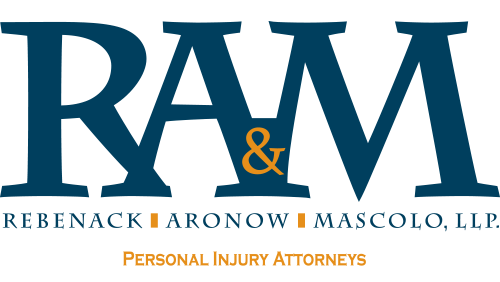Truck Accidents: Major Causes and Contributing Factors
Major causes of accidents involving commercial trucks have been well-documented by the Federal Motor Carrier Safety Administration, or FMCSA. The process of determining these causes involved hundreds of hours of data analysis on truck accidents, road conditions, driver fatigue and other contributing factors.
One of the top causes for a collision involved some kind of problem with the truck’s braking system. As a result, truck accident lawyers will tend to investigate this area first when determining the liability of the driver, company or other vehicles. Braking defects and misuse of the brakes are two different items that may indicate that the responsibility of the collision resides with either the company or the driver. Manufacturers and other drivers on the road can also contribute to collisions. The complexity of these cases requires careful and skillful legal attention.
Truck Brakes and Vehicle Maintenance
Commercial trucks use an air braking system to engage the spring brakes when the truck is parked, but an engine brake is used for most highway conditions. The engine brake prevents the brake drums on the tires from overheating, and it is supposed to be used if extended braking is necessary for any reason. Drivers can wear out the brake drums if they fail to engage the engine brake on steep grades, for example. In addition to the condition of the brakes, the distance between vehicles also plays a role.
There are many contributing factors to any accident involving a commercial truck, so an effective lawyer must be able to identify the major causes and contributing factors:
- Maintenance schedules on truck brakes are often neglected.
- Drivers might be at fault for maintaining an unsafe following distance.
- Air brakes can leak, and failure to identify and repair them creates a road hazard.
- Drum brakes will overheat if used improperly.
- Engine braking must be used as a primary method under certain defined road conditions to avoid wearing out the drum brakes.
- Manual adjustment of brakes can cause them to fail.
- Manufacturers and distributors might overlook the condition of defective truck brakes to save money.
Driving Speeds: Maintaining a Safe Following Distance
Vehicles traveling at a fast speed need to maintain a longer following distance. Commercial trucks take much longer to stop than passenger cars. They can weigh up to 80,000 pounds, and it can require around 500 feet or more to stop a loaded 18-wheel truck traveling at around 55 mph. This calculation is only made for dry pavement, and it also assumes that the quality of the truck’s braking system is good. At 60 mph, it will take around seven seconds, or 616 feet, for a driver to see a problem and make a decision about how to respond.
Driver Fatigue and Highway Accidents
The FMCSA also listed driver fatigue as a major reason for highway crashes. This agency has the resources to determine the most common causes of truck accidents. Driver fatigue is often caused by many conditions that are not apparent on the surface. Truck accident lawyers have the ability to investigate accidents and determine if conditions causing driver fatigue exist in the case. The investigation to determine the level of driver fatigue might include an inspection at the scene of the crash, witness statements, driver logs and other documented evidence. Police reports, hospital records and interviews with the drivers are often used in these cases.
Poor Weather, Traffic, Construction and Road Conditions

Other external factors will often compound the effect of the driver’s fatigued condition. In any road collision involving a semi-tractor, many variables come in to play. A company might have put pressure on their drivers to break hours-of-service rules to boost profit margins, for example. Road conditions may complicate other problems that are taking place. Driver fatigue combined with heavy traffic and poor weather conditions can create a hazardous situation. If a company pressures the driver to cut corners in order to make a delivery schedule, the problem becomes even more intense, and it can end in a collision.
Other Contributing Conditions
Drivers have the responsibility to maintain professionalism on the road and avoid hazardous situations. Even though fatigued drivers might make errors in judgment, this is different than a crash caused by a driver who was reckless or intoxicated. There are many ways to determine the cause of the crash. For example, a driver might be under the influence of a powerful prescription medication, and this can contribute to an accident. If the driver is also assigned to an unfamiliar route in bad weather conditions, these factors can all play a role in causing an accident. If a driver is sick and unable to take time off to recover, the mental state of the driver can become a hazard. When fleet managers or company owners apply pressure to drivers to meet unrealistic deadlines on top of all these other conditions, accidents are more likely to happen.
Determining Liability and Responsibility
Liability is generally understood in terms of responsibility, but it is ultimately determined through the courts. The process often takes time because the responsibilities for the company, manufacturers and drivers sometimes overlap. Obtaining compensation from the courts is certainly possible, but it is important to act quickly to get the best results. Trucking companies often hire their own lawyers in an attempt to minimize claims made against them for an accident. This can make it difficult to understand the legal concept of liability and how it applies to the different parties. Truck drivers might be found liable for a portion of the accident, and the company might be held liable for a portion as well. Each case must be evaluated on its own merits to determine the degree of liability, and this is what a truck accident lawyer does best.
Trucking Companies: Dodging Liability
Companies have more power than individual drivers, but they often try to shift blame and deflect responsibility. For example, the rules for the maximum amount of time a driver can be on duty is 11 hours. Managers often push drivers to make deadlines that can only happen if they violate hours-of-service rules, and they might even retaliate against drivers who refuse to break the rules and legal limitations on the allowed amount of drive time. In addition, drivers might be coerced to attempt to meet unreasonable deadlines under dangerous road conditions. When any worker gets pushed beyond physical limits, accidents are more probable; however, collisions with any commercial vehicle are extremely dangerous for everyone involved. The medical expenses and loss of income can add an additional layer of suffering beyond physical pain. Our law firm assists individuals suffering from pain and physical impairment as a result of an accident with a commercial truck.
Contact Our Law Firm
Our firm focuses on the individual conditions of each client, and we maintain quality relationships throughout the case. We have a history of winning compensation for clients, and this is possible because we take the time to understand each case thoroughly. Each accident involving a commercial truck has different variables involved, and it is our job to provide a comprehensive legal strategy to protect your rights under the law. Our firm can assist individuals who are facing the complex legal system after an accident involving a commercial vehicle. Effective legal representation is essential for dealing with complex cases, which can also involve multiple insurance companies, police reports and hospital documentation. Contact our office at (732) 247-3600 if you need help in New Brunswick, NJ. Our other office can be reached at (908) 448-2560 if you are located in Somerville, NJ.


